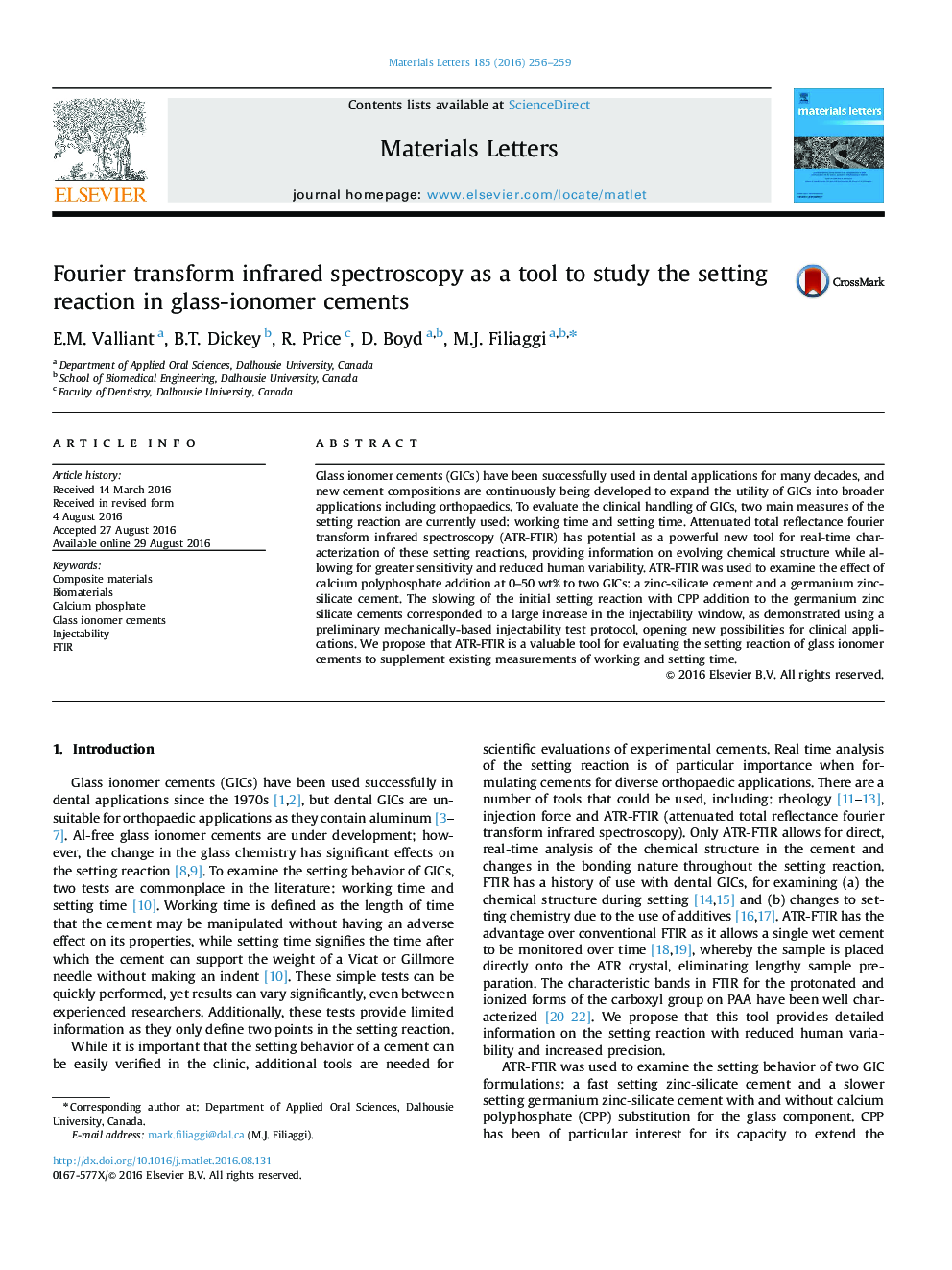| Article ID | Journal | Published Year | Pages | File Type |
|---|---|---|---|---|
| 8015893 | Materials Letters | 2016 | 4 Pages |
Abstract
Glass ionomer cements (GICs) have been successfully used in dental applications for many decades, and new cement compositions are continuously being developed to expand the utility of GICs into broader applications including orthopaedics. To evaluate the clinical handling of GICs, two main measures of the setting reaction are currently used: working time and setting time. Attenuated total reflectance fourier transform infrared spectroscopy (ATR-FTIR) has potential as a powerful new tool for real-time characterization of these setting reactions, providing information on evolving chemical structure while allowing for greater sensitivity and reduced human variability. ATR-FTIR was used to examine the effect of calcium polyphosphate addition at 0-50Â wt% to two GICs: a zinc-silicate cement and a germanium zinc-silicate cement. The slowing of the initial setting reaction with CPP addition to the germanium zinc silicate cements corresponded to a large increase in the injectability window, as demonstrated using a preliminary mechanically-based injectability test protocol, opening new possibilities for clinical applications. We propose that ATR-FTIR is a valuable tool for evaluating the setting reaction of glass ionomer cements to supplement existing measurements of working and setting time.
Related Topics
Physical Sciences and Engineering
Materials Science
Nanotechnology
Authors
E.M. Valliant, B.T. Dickey, R. Price, D. Boyd, M.J. Filiaggi,
